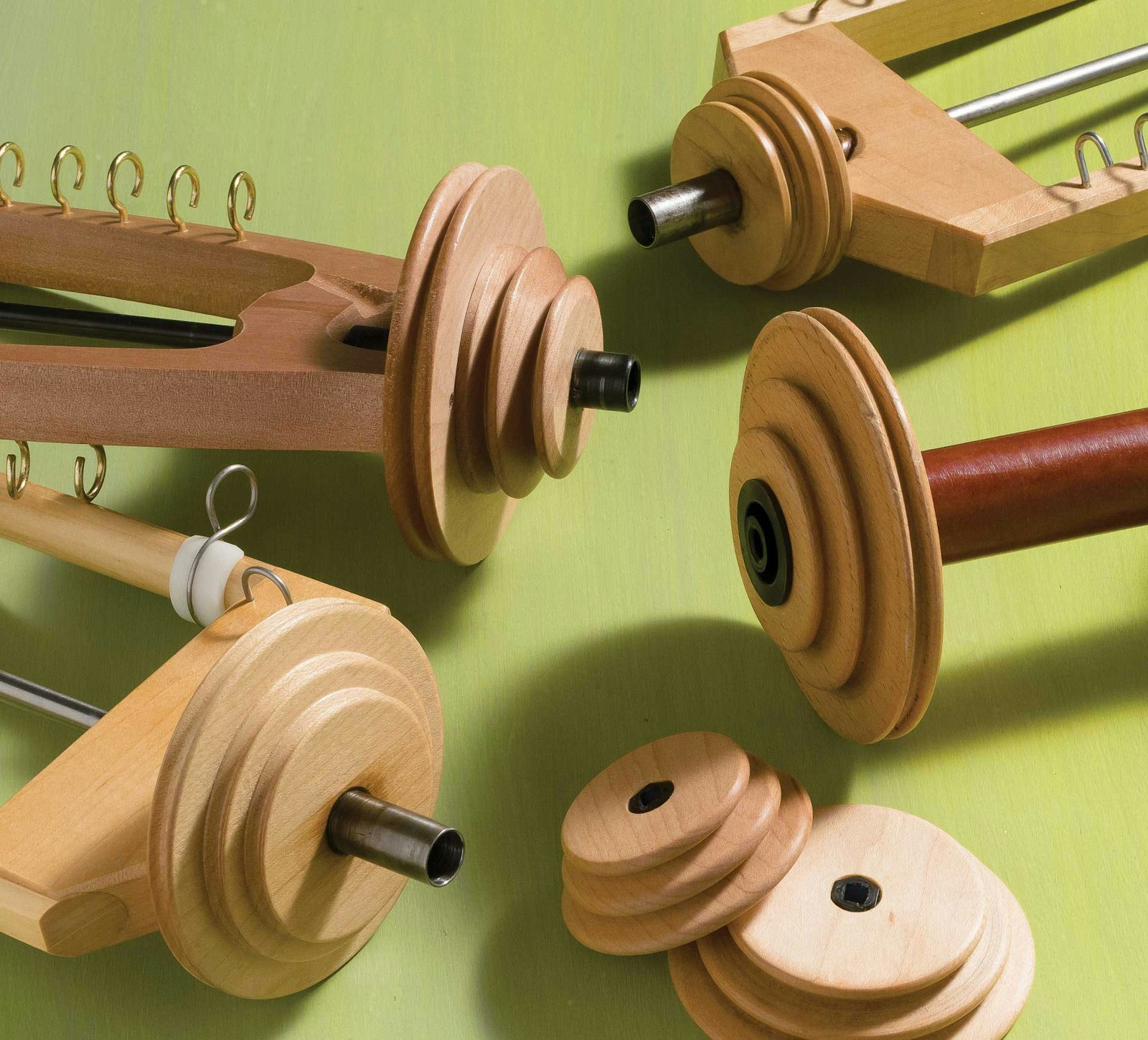One of the basic rules of spinning is that thicker yarn needs fewer twists per inch and thinner yarn needs more twists per inch. Most spinning wheels have whorls with multiple drive ratios—the number of times the flyer (or bobbin for a bobbin-lead wheel) will rotate for each rotation of the drive wheel. So if you have a 6:1 whorl on your spinning wheel, each time the drive wheel makes one revolution, it will put 6 twists into whatever length of fiber you have drafted. If you choose a whorl with an inappropriate ratio, it may be difficult to spin the yarn you want, either because the twist builds up too fast, making the yarn overspun, or because it builds too slowly, requiring extra treadling or leaving the yarn underspun and flimsy.
First, if you don’t know the ratios available on your wheel, find out. Different wheels come with different ratios, and many wheels come with or support multiple whorls to give you a wider range of ratios to choose from. If you don’t know the ratios of the whorls for your wheel, check the paperwork that came with the wheel or the manufacturer’s website.

As you begin a spinning project, you can choose a whorl based on these guidelines:
- For thicker yarns, either singles or two-ply yarns of 4 to 12 wraps per inch, try using a drive ratio of 6:1 or lower.
- For thinner yarns, either singles or two-ply yarns of 14 or more wraps per inch, try using a drive ratio of 9:1 or higher.
The ratio of the whorl is a starting point for producing the yarn you want. The twist in your yarn is determined by the ratio of the whorl and the amount of fiber and distance you draft each time you treadle. If you use a whorl with ratio of R:1 (where R = drive ratio), then the length of fibers you need to draft for a given number of twists per inch (tpi) is equal to R ÷ tpi.
For example, if you are using a 6:1 whorl and want 9 twists per inch, then you need to draft 6 ÷ 9 or ⅔ inch each time you treadle.
If you want to put exactly 6 twists per inch into your yarn, and you’re using a whorl with a 6:1 ratio, you need to draft 1 inch for each time you treadle. If you want 3 twists per inch, with the 6:1 whorl, you will need to draft 2 inches per revolution, or if you want 4 twists per inch, you have to draft 1½ inches per revolution. (That would be pretty difficult to do exactly, but you can approximate. Twist will redistribute when you finish the yarn, so inconsistencies will tend to even out.) If you want 12 twists per inch, then you need to either draft ½ inch for each time you treadle or treadle twice for each inch of fiber drafted. At that point, you might be better off switching to a whorl with a higher ratio to speed up your spinning and avoid the extra treadling. A lot depends on your spinning style, the fiber you’re spinning, and what’s comfortable for you.
Your goal in spinning with a short draw should always be to comfortably and efficiently have one treadle per draft and end up with the amount of twist you want in your yarn. If you find your yarn becoming overtwisted, you may need to switch to a whorl with a lower ratio. (Or you may need to adjust your tension so that the yarn is winding on faster.) If you’re finding your yarn is underspun and falls apart, you may want a whorl with a high ratio. (Or, again, you may need to adjust the tension.)
Ultimately, spinning should be enjoyable and comfortable and should produce the yarn you want. There are so many factors in successful spinning: fiber, preparation, drafting techniques, etc. Knowing whorl ratios and how to use them is one more tool you can use to have a satisfying spinning experience.
Rudy Amann of Brunswick, Maine, is a retired high school math teacher and assistant principal, who, twenty years ago, started a second career of spinning and mentoring spinning workshops. He attended most of the Spin.Off Autumn Retreats held between 1994 and 2008 and was a mentor at seven of them.
This article was initially published in Spin Off Fall 2013.

